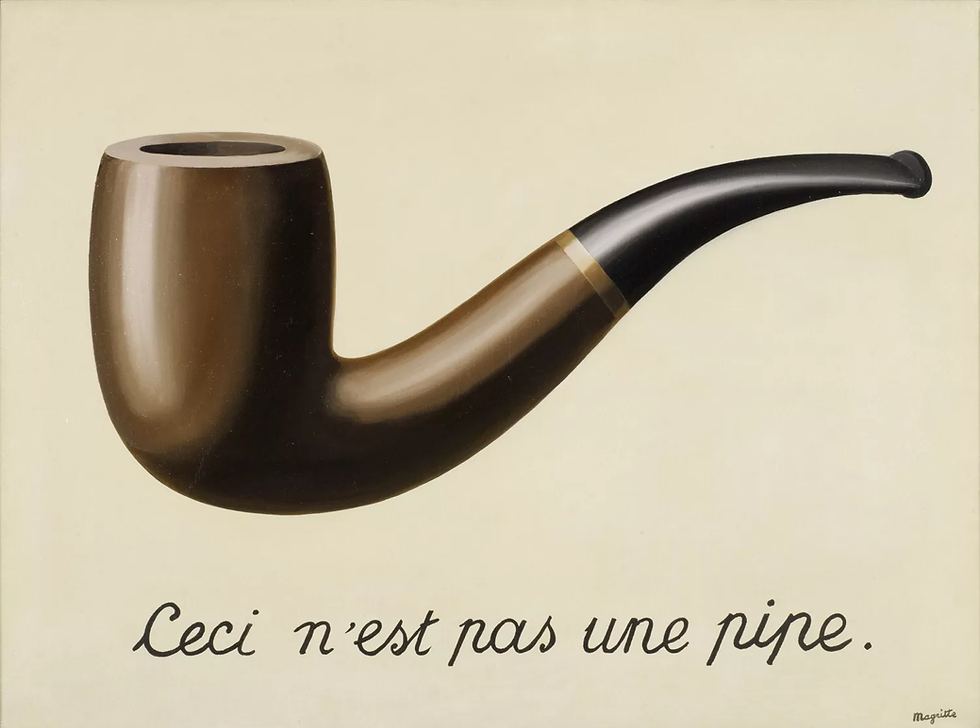
This article was originally published on 9th February 2022
The metaverse, surrealism & originality - what makes art ‘art’?
Contemporary art has had many now-famous artists ‘revolutionize’ the art world - from Yayoi Kusama and her polka dots to Jeff Koons’s balloon-like sculptures, what we consider ‘art’ has changed dramatically.
I remember visiting a modern art museum in Amsterdam, and in one of the exhibition rooms, there was a plaque on an empty white wall. And I looked at the wall from different angles, tried to interpret the texture of the paint, and really tried to take my time to ‘appreciate’ or understand the statement it was trying to make, but I just didn’t get it. Eventually, I realized the plaque was referring to an abstract rope-like sculpture in the middle of the room. Of course, I felt silly for not being able to observe that earlier, but it was my willingness to accept this white wall as a ‘statement’ of what modern (or contemporary) art can be. That it is ultimately about interpretation and individual opinion as to whether you appreciate the art as ’art.’
But how does one attach value to art? Who decides that value?
Price can be determined by an artist’s exhibition history, sales history, career level, the size of the artwork, or even the production costs of the art piece. But there are more complicated factors involved. Style is important - is the style recognizable as unique to that artist? Is it identifiable in a modern art museum?
David Hockney is one of the world’s most expensive living artists and is famous for his bright and almost child-like painting of landscapes. Hockney has had exhibitions in the Tate Modern in London, the Centre Pompidou in Paris, and the MET in New York. Hockney’s most expensive painting is the ‘Portrait of an Artists (Pool with Two Figures),’ which sold for $90 million at auction in 2018, which also became the most expensive work by any living artist at the time.

Hockney held this record until 2019 when Jeff Koons sold his ‘Rabbit’ for $91 million. Koons is considered a controversial artist partially because he employs a team to create artworks that he designs, not being directly involved in the creating process, and he has also been accused of plagiarizing ideas and appropriating them in his work. It is Jeff Koons’s minimalist style that has made him a recognizable and identifiable artist. His use of themes and subjects from popular cultures, such as toys, ornaments, and advertising, are all characteristics of ‘pop art.’
Minimalism in art is a very interesting concept. According to the Tate, minimalist art ‘can be seen as extending the abstract idea that art should have its own reality and not be an imitation of some other thing… With minimalism, no attempt is made to represent an outside reality; the artist wants the viewer to respond only to what is in front of them.’
The question then becomes, if minimalist art is easily replicable, then what ensures its authenticity and value? This is where the answers repeat themselves: it is about originality and reputation. It would depend on the career built by the artist and the respect garnered by (international) art experts and curators.
‘For the love of God,’ by Damien Hirst would be another important art piece to consider. For the Love of God is a platinum cast of a human skull, which Hirst encrusted with 8601 diamonds. The artwork was sold for $100 million and had a production cost of around $20 million, where the artwork is meant to question the morality of art and money. Damien Hirst is one of the most controversial figures in the contemporary art world today. How far will artists go to stay original? Is it about making a statement? Is it about attaching value, or meaning, to art?
Perhaps one of the most famous pieces of surrealism with a meta-message (and one of my parents’ favorites) is René Magritte's "Ceci n'est pas une pipe," which translates to ‘this is not a pipe.’

And the title is truthful: it is not a pipe, but merely a representation of one. It is about our interpretation of the piece - understanding that it is ultimately, merely an image. The implicit question, however, is ‘if it is not a pipe, what is it?’ It draws our attention to how language is used and constructed and how we interpret it to understand the world around us.
The art piece encourages us to take things literally: to challenge society’s philosophical assumptions about the ‘nature of reality,’ and why we interpret and access concepts through images and words and not for what they are. Perhaps Magritte wanted us to challenge why we ‘know’ or ‘assume’ things. Or perhaps we just dismiss it as a piece of irony that deserves only a basic acknowledgment of value. Either way, it is once again up to the individual and their interpretation of the ‘art.’
Now envision this: you are in a room with only mirrors, instead of walls, you are in a seemingly infinite room with infinite reflections of yourself. Now imagine beautiful purple fairy lights, hanging all over the room. The dark corners now reflect purple light back at you. They look like purple stars and it seems like you are in your own purple-starred universe. This is one of Yayo Kusama’s most famous installations: the infinity mirror rooms.

Art, really, can be anything. It can be interactive, minimalistic, multi-dimensional, surreal, complex or simple in design but mesmerizing in appearance. And while maybe the financial value of art is determined by galleries and critics, or the reputation of the artist, perhaps it is on an individual level that we can attach a personal value to art. And that is priceless.

Comments